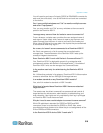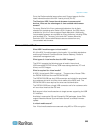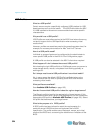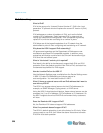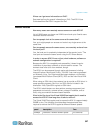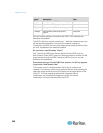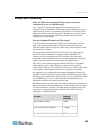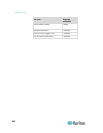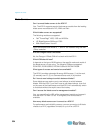
Appendix D: FAQs
327
Where can I get more information on IPv6?
See www.ipv6.org for general information on IPv6. The KSX II User
Guide describes the KSX II‟s support for IPv6.
Remote Access
How many users can remotely access servers on each KSX II?
Up to 8 KVM users can share one KVM channel and up to 8 serial users
can share 8 serial channels.
Can two people look at the same server at the same time?
Yes, up to eight people can access and control any single server at the
same time.
Can two people access the same server, one remotely and one from
the local port?
Yes, the local port is completely independent of the remote “ports.” The
local port can access the same server using the PC-Share feature.
In order to access KSX II from a client, what hardware, software or
network configuration is required?
Because the KSX II is completely web-accessible, it doesn't require
installation of proprietary software on clients used for access. The
browser does have to be Java enabled, though.
The KSX II can be accessed through major web browsers including:
Internet Explorer, Mozilla and Firefox. The KSX II can now be accessed
on Windows, Linux, Sun Solaris and Macintosh desktops, via Raritan's
Java-based Multi-Platform Client (MPC), RSC and the new Virtual KVM
Client.
When using an SSH client, the customer has to provide an SSH client. In
some operating systems, like Linux, an SSH client is included in the
distribution. Also, OpenSSH.org has an SSH client.
The KSX II administrators can also perform remote management (set
passwords and security, rename servers, change IP address, and so
forth) using a convenient browser-based interface.
What is the file size of the Virtual KVM Client applet that is used to
access the KSX II? How long does it take to retrieve?
The Virtual KVM Client applet used to access the KSX II is approximately
500KB in size. The following chart describes the approximate time
required to retrieve the KSX II's applet at different network speeds:
Speed
Description
Time
100Mbps
Theoretical 100Mbit network speed
0.05 seconds



